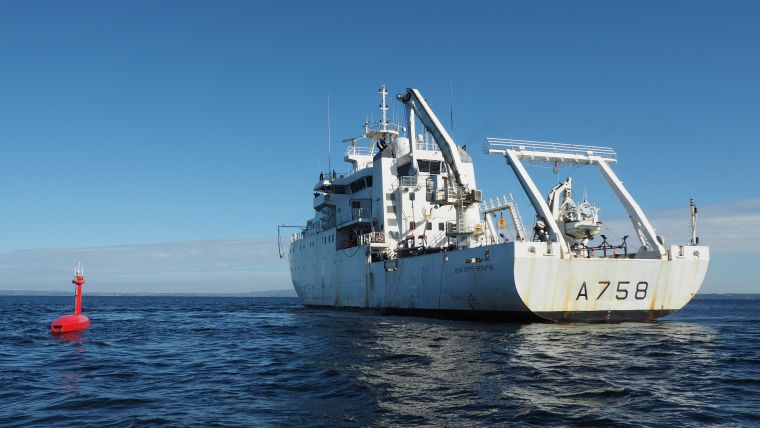Remote hydrography and regulation: mission impossible?
Legal frontiers of USVs
The development of unmanned and autonomous surface vehicles in recent years has triggered a new era in civilian and military maritime operations. One of the applications that is likely to benefit from this technological revolution is seabed mapping. Exail (formerly iXblue) decided to make maritime autonomy and remote hydrography a key technology priority in 2017, when it released its first DriX unmanned[1] surface vessel (USV). Since then, the DriX USV has become a large commercial success, with more than 20 units built and sold around the world (USA, UK, Korea, Brazil, Poland, UAE, Japan, etc.), and operations in many more countries, such as Canada, Taiwan, Saudi Arabia, Bahrein, New Zealand and Tonga.
In a world that is in constant need of field-proven data but is also highly concerned about the impact of human activities, the environmental impact of shipborne missions hangs in the balance. The introduction of USVs helps the acceptance of such investments by considerably reducing the carbon footprint of the survey – an improvement of over 95% in energy consumption in the case of DriX. During a survey conducted in February 2023 in the Bay of Biscay, DriX covered 2,400 nautical miles in 12 days of operations, using 600L of fuel for the DriX mission and up to 2,000L for the associated logistics, mobilization and escort vessels in the visited ports. A comparison for the same client, who carries out this type of mission every year with crewed vessels, reveals that using DriX saved 200,000L of fuel.
USVs can be regarded as a force multiplier and complementary data collection subsystem to mother research or military vessels, or as a stand-alone tool working from port to port for dedicated mapping and environmental assessments. This capability allows key players to integrate USVs into their long-running survey routines and provides long maritime persistence at sea for new players with fewer investment capabilities.
Despite these successes and the return on experience gathered, some operators remain cautious about the potential risks – whether legal or operational – associated with the exploitation of such autonomous vehicles and technologies. Nevertheless, Exail has demonstrated over the years that the advantages of autonomous technology and unmanned vessels such as DriX considerably outweigh the potential risks. For Exail, the experience at sea has demonstrated that the risks associated with the operation of an unmanned vehicle can be reasonably mastered.
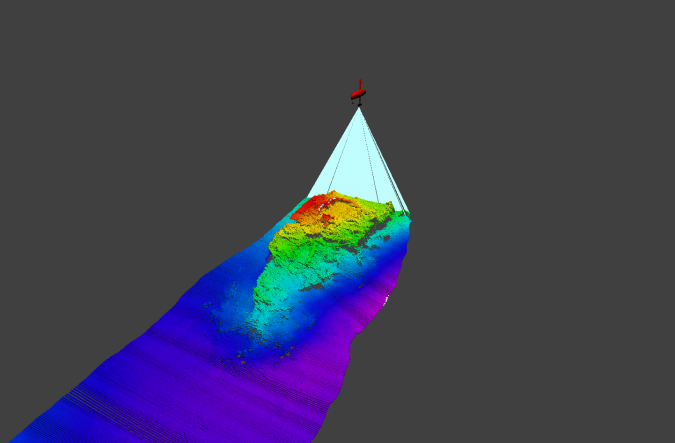
Legal qualification for USVs
As far as we know, there is no current unified international definition of a ship. The United Nations Convention on the Law of the Sea (UNCLOS), signed in Montego Bay in 1982, refers in all its provisions to ships without providing a definition. Nevertheless, being qualified as a ship triggers many legal consequences. Ships are subject to many international and national conventions, such as laws and regulations concerning shipbuilding and design (with safety requirements), navigation (COLREG, SOLAS, STCW conventions) or maritime pollution (MARPOL convention and Hong Kong convention for vessel recycling). It also bestows rights and obligations: rules of navigation defined in the UNCLOS when sailing in national waters, EEZs or international waters, or conditions and limitations for performing survey or scientific missions in territorial waters, contiguous zones or EEZs.
Several of these legal provisions may be disproportionate for USVs, as we cannot expect unmanned platforms that are not designed to carry human beings (such as DriX) to strictly comply with the same safety rules as traditional passenger vessels. Similarly, the rules of safety at sea cannot be construed and applied in the same manner for traditional manned vessels and USVs.
For these reasons, we believe that USVs must be considered as a new legal category. French law has selected this option, by adapting the existing maritime legal framework to the specificities of USVs. This will avoid the application of irrelevant provisions from the existing legal maritime framework, and thus protect and encourage the innovation allowed by USV development.
We must also consider the case of warships. In hydrography, many vessels belong to naval forces and therefore fall under the classification of a warship, as defined by Article 29 of UNCLOS[2]. As discussed above for civilian ships, USVs exploited by naval forces cannot be considered a traditional warship due to the absence of a crew. Nevertheless, a military USV would act under the command of a naval force State organization (even remotely), could bear specific marks and could be included on a navy list. For these reasons, we believe it will be relevant to extend, with necessary adaptation, the current definition of warship to military USVs so that they can benefit from specific rights recognized by international law, such as immunity. For military USVs used for hydrography, this would be an interesting development that could help guarantee safer operations in sensitive areas.
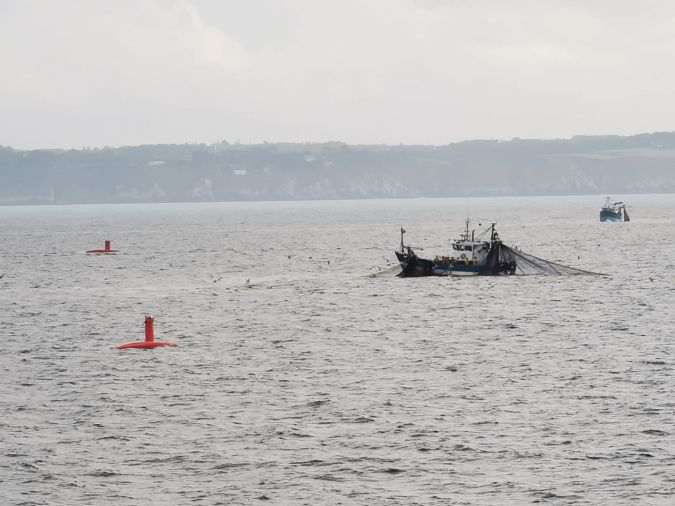
Legal tools to safely operate USVs
Although no international legal framework is in place to regulate USV operations, various legal tools do exist (or will exist) to allow safe remote operations. Over recent years, and despite the lack of appropriate regulation, Exail has demonstrated its ability to successfully support its customers during their remote hydrographic missions with the DriX USV. Remarkable scientific results have been achieved, along with unprecedent savings in time and fuel compared to traditional surveys. The USVs have proved to be a mandatory yet complementary asset for hydrographic surveys, seabed mapping and oceanographic research.
On the contractual side, the use of knock-for-knock indemnity clauses makes it possible to allocate the risks of damage or loss to property or of death or injury to personnel between the parties. This cancels the risk of claim between the parties as a result of an incident involving a USV. Additional contractual provisions on liability limitation also help to reduce the risk.
With regard to non-contractual incidents or damage to third parties, insurance coverage is a second line of defence. As for manned vessels, USVs need to be insured through hull & machine and P&I insurances, or equivalent insurance coverages. Moreover, with the growing development of USV activities, many insurance companies are now able to provide interesting insurance coverage for USVs in terms of cost or implementation.
As a last point, good coordination with local authorities in the area of operations should also be considered. In the case of Exail, we regularly keep the concerned local authorities informed of our USV operations and even establish temporary agreements with local search and rescue services where possible, as part of our risk assessment.
As such, the lack of a unified legal framework has not been a definitive obstacle for Exail. Contractual and insurance tools have been very helpful, and the more recent emergence of new legislation on USVs is a key factor that will increase the possibility of USV operations.
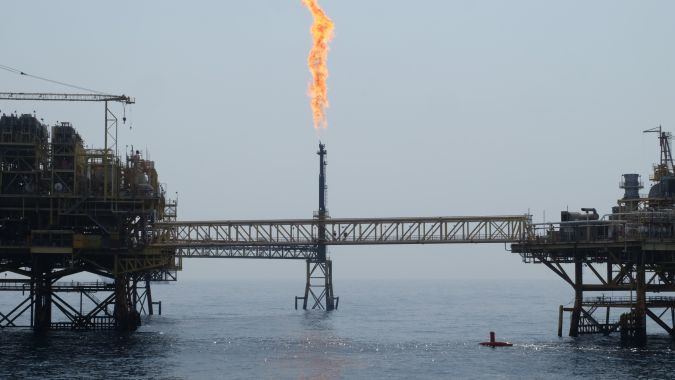
French regulations on USVs
France provides a very interesting example of new regulations for USVs. This regulation, which has been built step by step since the Blue Economy Act of 2016 (Loi Leroy), enables successful collaboration between industry, operators and authorities. Recognizing the important impact that this new regulation would have on its survey operations, Exail actively participated in working sessions to develop the new regulation.
France now authorizes USV operations in its waters[3], officially for experimental purposes only, although business operations also go through the same permit process. The Prefectures Maritimes are responsible for providing these USV permits. For USVs less than 10m with a speed below 10 knots and with no cargo or passengers, permits to operate a USV in a defined area are granted upon simple declaration. For other USVs, prior authorization from the maritime authorities is required. Exail’s DriX falls in this second category and Exail has therefore regularly applied for such permits since the issuance of this administrative regulation in May 2020. This procedure is likely to change in 2024 with the obligations of flagging and registration of drones to operate in French waters.
The next step was the ordinance law of 13 October 2021[4], which reformed French maritime legislation with rules on USV certification and flag procedures, insurance obligation, identification marking and liability regimes for USV operators and owners. The final step will be the entry into force, hopefully by the end of 2023 or in early 2024, of the practical administrative regulations on technical identification criteria for USVs, the certification procedure, the minimum safety equipment requirements for USVs and operator permits.
It is interesting to note that, based on our experience, this first attempt at USV regulation has not been an obstacle for survey missions. In addition, it has the benefit of familiarizing maritime authorities with the USV concept of operations through risk assessment and survey supervision. With growing USV activities, having authorities that are used to managing such USV operations might be highly beneficial for all present and future operators acting in French waters.
Note that French law distinguishes between ‘maritime drone’ and ‘autonomous vessel’[5]. We deem this distinction to be very relevant, as a drone without cargo or passengers should not be treated in the same way as a larger autonomous vessel with people onboard. The safety criteria for construction or sea-going must therefore also be different, to avoid disproportionate or irrelevant requirements for drones. Whereas the legal regime for drones is now complete and will enter into force soon, the legal status for autonomous vessels remains experimental (with a two-year limitation) and is far from being fully completed.
Thus, in the case of hydrography missions in France, it is currently easier to operate a unit classified as a drone rather than an autonomous vessel.
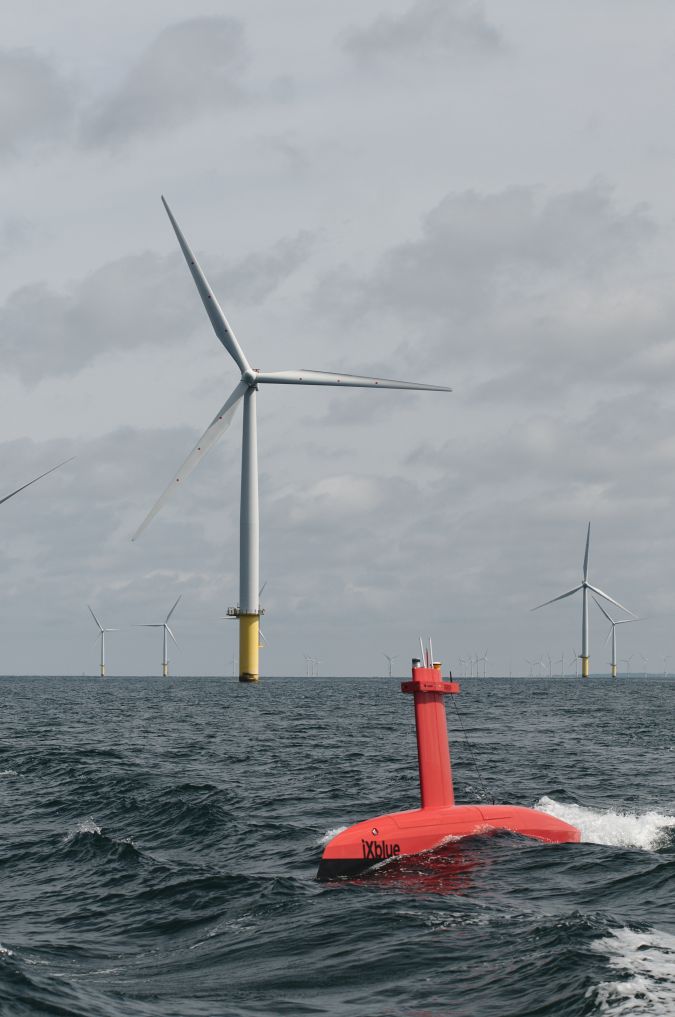
Status of operators
A last interesting point to be underlined is the status of USV operators. Indeed, behind the drones, the IA and the screens, there will always be a human who is legally responsible. French law considers the USV operator as the captain in charge of commanding the USV (even if the USV is remotely commanded or under autonomous mode). To reduce their liability risk, French law has innovated with the application of liability limitation based on the LLMC convention of 1976 to the owner/charter/captain of the drone. Such a provision may reassure operators and owners regarding their risk while supervising USV operations.
In addition, to the extent that the USV operator acts within the scope and limits of their position, the liability shifts in the case of an incident to the owner rather than the USV operator. This legal mechanism also reinforces the individual legal protection of USV operators. The exception is if the USV operator’s conduct involves gross negligence or willful intent to kill, injure or damage.
Considering the legal tools available in a context of emerging regulation, Exail and Exail’s clients have successfully operated DriX in the territorial and EEZ waters of over 20 countries with differing maritime regulations since 2017. These include Azerbaijan, Tonga, Taiwan, Saudi Arabia, Brazil, France and the US. USV operators and Exail have adapted the documents that they use in the private sector (risk assessment, concept of operations) in the best way that they can to cope with this increase and heterogeneity in regulation.
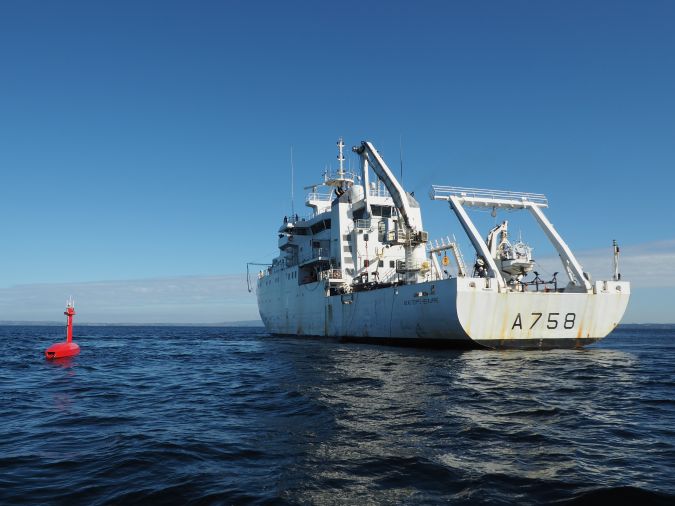
Pending questions
Despite the progress made, many questions remain. For example, what happens when a USV sailing under the French flag enters the waters of another country? Will it be admitted as it is, or will it need to go through a local certification process first? This is a critical legal and operational issue that is, to our knowledge, far from being solved.
Also, if a USV is being operated autonomously from a remote operational centre (ROC), which law applies? Is it the flag jurisdiction of the USV, or the jurisdiction of the location of the ROC if these are not the same? Considering that the key element from which an incident and subsequent liability may result is the USV, we believe that the flag jurisdiction of the USV would be more appropriate.
Conclusion
With the entry into force of the last legal and regulatory provisions by the end of 2023, France will probably have one of the most comprehensive legal frameworks for USV operations in the world. At the same time, DriX clients and other autonomous platform operators have proven that the lack of an international legal framework need not be an obstacle to performing more agile, more efficient, and more environmentally friendly surveys that complement conventional survey vessel operations.
[1] We deliberately use the term ‘unmanned’ rather than ‘uncrewed’ as we consider that reference to the word ‘crew’ can create confusion about the nature of the concerned vessel. An unmanned vessel does not carry anyone onboard (no crew or passengers), whereas an uncrewed vessel has no crew but could can carry a passenger.
[2] Article 29 of UNCLOS defines a warship as: “a ship belonging to the armed forces of a State bearing the external marks distinguishing such ships of its nationality, under the command of an officer duly commissioned by the government of the State and whose name appears in the appropriate service list or its equivalent, and manned by a crew which is under regular armed forces discipline”.
[3] Arrêté du 20 mai 2020 relatif aux modalités d’expérimentation de la navigation des engins flottants maritimes autonomes ou commandés à distance.
[4] Ordonnance n° 2021-1330 du 13 octobre 2021 relative aux conditions de navigation des navires autonomes et des drones maritimes.
[5] A drone is an unmanned surface or subsea vessel with a length between 1m and 16m, a speed of less than 20 knots, less than 100UMS gross tonnage, less than 300kJ of kinetic energy and without any cargo or passengers. Any unmanned vessel not complying with the cumulative criteria is classified as an autonomous vessel.

Value staying current with hydrography?
Stay on the map with our expertly curated newsletters.
We provide educational insights, industry updates, and inspiring stories from the world of hydrography to help you learn, grow, and navigate your field with confidence. Don't miss out - subscribe today and ensure you're always informed, educated, and inspired by the latest in hydrographic technology and research.
Choose your newsletter(s)
